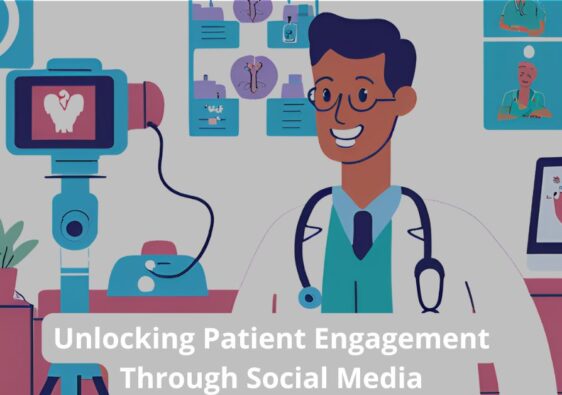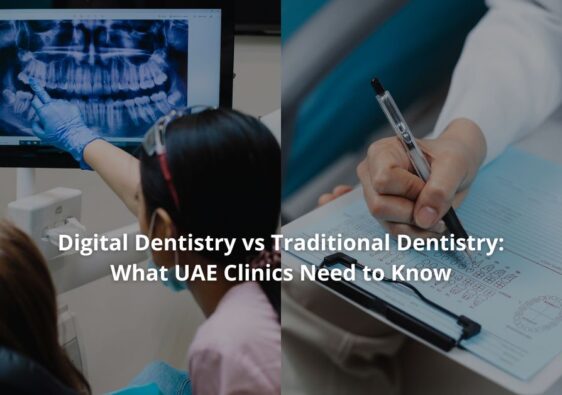In the world of dentistry, precision and attention to detail are of the utmost importance. As technology continues to advance, so does the need for accurate case documentation. One invaluable tool that has revolutionized the way dentists record and analyze cases is dental photography. This art and science not only aids in diagnosis and treatment planning but also serves as a visual timeline of a patient’s oral health journey.
Dental photography is one of the key pillars that helps the clinic evolve their quality of care, and analyze the treatment outcomes, the workflow process and the strengths/downfalls.
Imagine having a detailed, visual record of a patient’s dental history right at your fingerprints. That’s precisely what dental photography provides. Gone are the days of relying solely on written notes and sketches. A picture is worth a thousand words, and in dentistry, it can be the key to a comprehensive understanding of a patient’s oral health.
Dental photography serves multiple purposes, ranging from diagnosis and treatment planning to patient education and communication. With high-quality images, dentists can accurately document the current state of a patient’s teeth, gums and mouth surface. This visual data becomes a great reference point for monitoring changes over time and evaluating the effectiveness of treatments.
Let’s name some applications of dental photography.
1. Diagnostic Tool: It enables dentists to capture detailed images of a patient’s teeth and surrounding structures.
The visual data aids in the early detection of issues.
2. Treatment Planning: When developing a treatment plan, dentists need a clear understanding of the patient’s current oral health status. High-quality photographs allow for precise treatment planning.
3. Communication with Patients: Dental photography visually represents the diagnosis and proposed treatment. Patients can better understand their condition and actively participate in decisions regarding their oral health.
4. Legal Documentation: In cases where legal documentation is required, dental photographs serve as a reliable and objective record of a patient’s oral health. This can be crucial in situations involving insurance claims or collaboration with other healthcare professionals.
Now the big question is, How to Capture Riveting Dental Photographs?
1. Invest in Quality Equipment: To achieve professional-grade dental photographs, invest in a high-quality camera with macro capabilities. A good camera set-up is probably one of the most expensive investments you’ll make in your career. The best two camera brands are Nikon and Canon.
2. Invest in Camera Accessories: Proper lighting is essential. A flash can make or break an image, there’s the twin flash and the ring flash. All these are used to eliminate shadows and ensure clarity.
3. Standardize Your Photography Protocol: Try to capture dental photographs, consistency is key to creating a reliable visual record over time. This includes using retractors for intraoral shots, maintaining the same camera settings and capturing images from standardized angles.
4. Intraoral and Extraoral Shots: Capture both intraoral and extraoral shots to provide a comprehensive view of the patient’s oral health. Intraoral shots focus on the details of the teeth and soft tissues, while extraoral shots can highlight facial features and overall aesthetics.
5. Patient Comfort and Consent: One important thing is to ask for your patient’s consent and permission before capturing any images. Explain the reason and address any concerns or questions the patient may have. A comfortable and informed patient is more likely to cooperate, resulting in better-quality photographs.
Now that we know how to capture, let’s find some practical steps to master dental photography.
1. Enroll in Dental Photography Courses: Think of this as an investment in your skills, it’s a crucial step. These courses will help you gain hands-on experience and learn how to capture precise and informative images. They usually cover topics like equipment selection, lighting techniques and patient communication during photography sessions.
2. Hire a Freelance Photographer: For those who prefer a more hands-off approach, consider hiring a freelance photographer with experience in dental photography. It allows you to focus on your expertise in dentistry while ensuring top-notch documentation. Check their portfolios and ask for references.
Let us know if you would like us to give you a more in-depth blog on how to enrol and choose the dental photography course that’s right for you.
Dental photography is a powerful tool that enhances the quality of patient care by providing a visual narrative of their oral health. Dentists who embrace this art and science find themselves better equipped to diagnose, plan treatments, communicate with patients and create a comprehensive record for legal purposes. As technology continues to advance, the integration of dental photography into daily practice will undoubtedly become even more seamless, further improving the standard of care in dentistry. So, smile for the camera, it’s not just capturing an image, it’s capturing a healthier, happier future.
Connect with Us
Ready to embark on this exciting journey? Contact us today: 📍 Dubai, United Arab Emirates – Tel: +971 56 123 6043 📍 Khartoum, Sudan – Tel: +249 91 273 1048
Explore Balsam Medico and discover a world of efficient clinic management at www.balsammedico.com. Together, let’s reduce fines, elevate efficiency, and embrace a new era of dental healthcare.
Join the Balsam Medico newsletter for exclusive content and the latest news. Be the first to view valuable information and updates!




